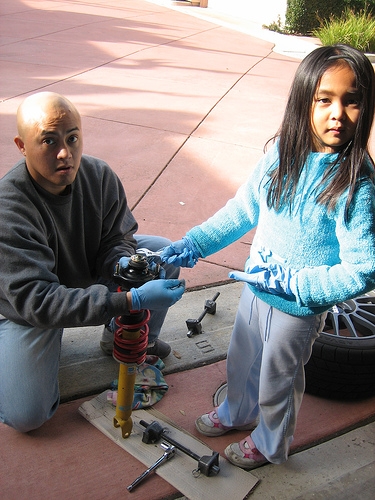
Practically every passenger car produced in the last 10 years uses struts of some sort in the suspension system. These versatile connectors can be found in the front or rear of the vehicle and have helped manufacturers to cut costs without hurting function.
Strut suspensions were first used by Ford on the 1949 Vedette, using a design originally refined by Earle S. MacPherson.
The shock absorber is a sub-assembly of the strut, and is found inside of the the strut's coil spring. The coil spring sits between two round mounts, which are connected to the chassis on one end and a wheel on the other.
Shock absorbers (dampers) are gas-filled tubes with a valve inside, which is connected to a shaft. When this chassis-connected shaft is compressed, it resists rapid movement and prevents the spring from going into rapid oscillation and "hop."
The strut functions not only as a moving suspension piece, but also as the wheel's upper control arm and support. This simplifies construction and reduces costs.
Strut suspensions do an acceptable job of controlling the vehicle, but tend to cause tires to lean excessively outward when compressed.